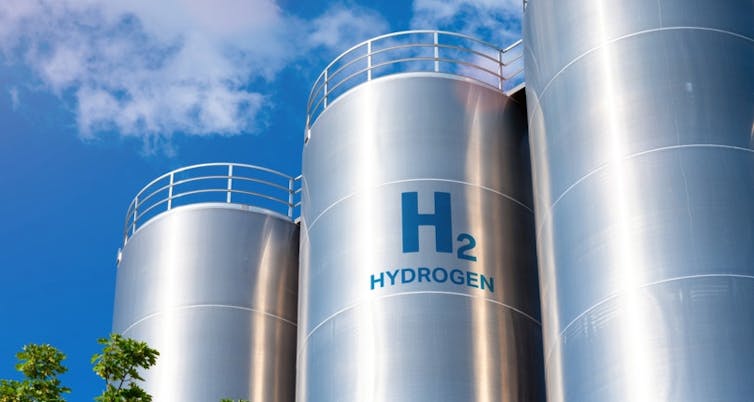Source: The Conversation (Au and NZ) – By Kylie Walker, Visiting Fellow, Australian National University

Australian innovation has the capacity to protect us – our environment, our digital world, our borders and our health. All of these are focuses of this year’s federal budget.
But the science, technology, engineering and mathematics (STEM) sector has been sounding the alarm for years that our research system is in crisis. Reviews in progress – including the Universities Accord, National Science and Research Priorities, and the Australian Research Council – are an opportunity to examine and respond to systemic problems.
However, they don’t take a whole-of-sector view to designing a research and innovation system that is not only functional but harmonious, and which makes the best use of Australian talent.
While we wait for these reviews to be complete, here’s where the 2023-24 budget stands in terms of Australia’s science, technology and innovation sectors in my assessment as the CEO of the Australian Academy of Technological Sciences and Engineering (ATSE).
More STEM degrees
The Advanced Strategic Capabilities Accelerator will see A$3.4 billion over a decade to translate disruptive new technologies – such as hypersonic research and quantum decryption – into defence capability.
The nuclear submarine workforce will be bolstered by $128.5 million for 4,000 new places for tertiary STEM education. This is necessary to meet our commitments under AUKUS. We’ll never say no to more STEM degrees in this engineer-poor, rapidly innovating world.
This budget also aims to make safer online spaces with a welcome $7.9 million for combating misinformation and disinformation via the Australian Communications and Media Authority, and $101.6 million for cybersecurity.
Read more:
Australia needs a robust cybersecurity overhaul – not whack-a-mole bans on apps like TikTok
But here, too, is a miss in the education and career pathways to train, support, and continue to develop Australia’s digital workforce. We’re already behind our OECD counterparts – Australia trains an insufficient number of engineers, with just 8.5% of Australian university graduates receiving engineering degrees compared with over 12% in Canada and over 23% in Germany. Our engineering and technology workforce is studded with gaps in areas such as civil engineering, telecommunications and mining, to name just a few.
The National Quantum Strategy, Australian Centre for Quantum Growth, and national artificial intelligence (AI) centre are a necessary trio to keep pace with this rapidly transforming field.
Read more:
Australia has a National Quantum Strategy. What does that mean?
Small business is supported to commercialise research through the $392 million Industry Growth Program, adding to the already-committed Australia’s Economic Accelerator program. This will continue to build a positive commercialisation environment and lead to more of Australia’s world class research becoming world class innovations.
En route to a net zero superpower
In a decarbonising global economy, Australia has the potential to be a clean energy superpower. We are home to leading minds in most of the key technologies that will drive the clean energy revolution – next-generation batteries, computing power, machine learning and clean hydrogen to name a few. We have abundant critical minerals, sun and wind.
The new Net Zero Authority is an important step towards the urgent need to decarbonise and transform our domestic and export energy markets. But to achieve this bold transformation, government investment in research and development must match innovation-leading nations like Japan, Germany and the United States.
Read more:
Australia finally has a Net Zero Authority – here’s what should top its agenda
We need a coherent plan for clean energy research, development and deployment, with the backing to realise the vision. To keep the top tech and innovation minds here, we must invest around 3% of our gross domestic product (GDP) in research and development (R&D).
Direct government spend on R&D currently sits at 0.49% of GDP – its lowest level since 2014, leaving researchers competing for scraps. By contrast, visionary investment prioritises creating and applying new knowledge over the long term, and invests in building Australia’s new economy.
We need a structural review of R&D funding now to future-proof the system.

Shutterstock
What’s missing from the budget for STEM
Research funding grants have flatlined: inflation means their real value is falling. As we await Universities Accord outcomes, the government has avoided supporting the full cost of teaching STEM degrees. Nothing has been announced to address urgent STEM professional shortages, and to support STEM workforce diversity.
Likewise, there’s silence on much-needed industry bodies – a National Engineering Council and the National Indigenous STEM Professional Network.
International STEM collaboration is more important than ever, but has taken a hit with a $25 million reduction to the Global Science and Technology Diplomacy Fund. The fund was planned to support international collaboration in advanced manufacturing, AI and quantum computing, hydrogen production, and emerging applications of RNA vaccines and therapies to improve health outcomes.
In our region, and across the globe, collaborative and diplomatic relationships in STEM are essential.
We are yet to leverage Australia’s true capacity to grow a thriving R&D economy that supports our health, wealth, wellbeing and sustainability, and grows our stature as an innovative and future-focused, inclusive international leader.
Every budget has winners and losers. Next year, the reviews of our STEM sector will be complete, the government will have been in power for two years, and the window for game-changing investment will be shrinking.
My hope is that Australia’s long-term future as a safe and resilient nation will be the winner. We need a comprehensive and well funded plan to drive national progress and prosperity through research and development.
![]()
Kylie Walker’s organisation receives funding from the Department of Industry, Science and Resources, and is CEO at the Australian Academy of Technological Sciences and Engineering.
– ref. Amid a STEM crisis, here’s what the 2023 budget promises for Australian science and innovation – https://theconversation.com/amid-a-stem-crisis-heres-what-the-2023-budget-promises-for-australian-science-and-innovation-205204







